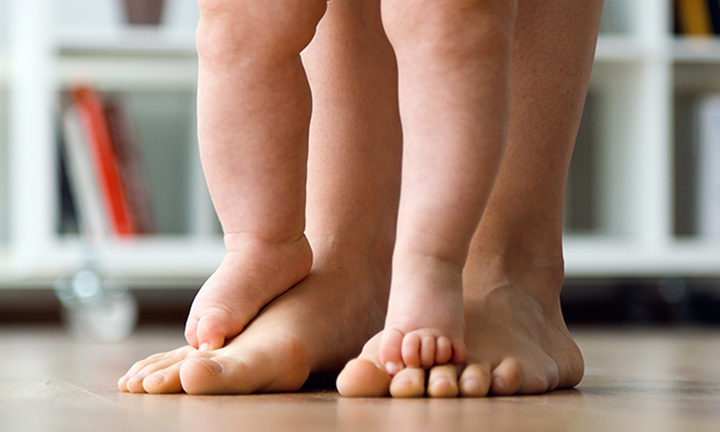Ingrown toenails can be a painful experience for anyone, but when it comes to our little ones, the discomfort can be particularly distressing. As parents, we want to ensure our children are as comfortable and happy as possible, and understanding how to treat and prevent ingrown toenails is an essential part of that care. In this article, we’ll explore the causes of this common condition in babies and toddlers, provide step-by-step treatment options you can safely implement at home, and share valuable tips to help prevent ingrown toenails from recurring.
Whether you’re facing this issue now or looking to equip yourself with knowledge for the future, our friendly guide will help you navigate the world of ingrown toenails with confidence and care. Let’s get started on keeping those tiny toes healthy and happy!
Understanding Ingrown Toenails in Babies

Ingrown toenails occur when the edges of a toenail grow into the surrounding skin, leading to discomfort, pain, and potential infection. In babies, this issue can arise due to various factors, including improper nail trimming, tight footwear, or naturally curved nails. The signs to look for include redness, swelling, and tenderness around the toe, which can make your little one fussy and irritable. Moreover, if you notice pus or bleeding, it’s essential to seek medical attention promptly.
To treat an ingrown toenail effectively, begin by soaking the affected foot in warm, soapy water for about 15-20 minutes, which can help reduce swelling and pain. After soaking, gently dry the area and apply a clean bandage. If the condition seems severe or has not improved within a few days, consult your pediatrician for further assessment. Treatment options may include lifting the nail edge, prescribed antibiotic ointments, or, in some cases, a minor surgical procedure to remove the ingrown section.
Preventing ingrown toenails in babies can be straightforward with a few mindful practices. Consider the following tips:
-
- Regular Nail Trimming: Trim nails straight across and avoid rounding the corners.
-
- Proper Footwear: Ensure shoes fit well, not too tight, allowing toes to move freely.
-
- Monitor Changes: Keep an eye on any changes in nail growth or signs of discomfort.
By implementing these strategies, you can minimize the risk of ingrown toenails and keep your baby comfortable and happy.
Signs and Symptoms to Watch For
When it comes to identifying an ingrown toenail in your little one, there are several signs that can help you determine if treatment is necessary. Redness and swelling around the toenail are often the first indications. If you notice your baby’s toe looking inflamed or having a warm sensation, it’s wise to take a closer look. Additionally, if the area appears to be secreting pus, this could signal an infection, which warrants immediate attention.
Another key factor to observe is your baby’s behavior. If they seem to be in discomfort, **crying more than usual**, or refusing to walk or put weight on the affected foot, these can be signs of an underlying issue. Additionally, watch out for any signs of **bleeding** or **pain when touching the toe**. If your child is constantly trying to remove their sock or shoe, it could be a clear indication that something is bothering them.
In some cases, you might also notice changes in the toenail itself. A toenail that is becoming **thicker or curving into the skin** can indicate the early stages of ingrowth. In order to track these symptoms effectively, consider maintaining a simple table to monitor any changes over time:
| Observation | Details |
|---|---|
| Redness | Check for inflammation around the toenail. |
| Swelling | Notice any puffiness around the toe area. |
| Pain | Assess if your child is hesitant to walk or touch the toe. |
| Discharge | Look for signs of pus or bleeding. |
| Nail changes | Observe for thickness or curling of the toenail. |
Effective Home Remedies for Relief
When dealing with an ingrown toenail in your little one, several home remedies can help alleviate discomfort and promote healing. One popular method is soaking the affected foot in warm, soapy water. This can help reduce inflammation and soften the skin around the nail. Aim for at least 15-20 minutes of soaking, two to three times a day. After soaking, gently pat the foot dry and apply a clean bandage to protect the area.
Another effective remedy involves using a cotton ball or dental floss to promote proper nail growth. After soaking, take a small piece of cotton or a strand of dental floss and gently place it under the edge of the ingrown toenail. This can help lift the nail away from the skin and encourage it to grow above the skin rather than into it. Remember to change the cotton or floss regularly to maintain cleanliness and avoid any infection.
Additionally, applying natural antiseptics can be beneficial for healing. Consider using **tea tree oil** or **aloe vera gel**, known for their soothing and antibacterial properties. Simply dab a small amount onto the affected area after soaking and bandaging. This not only helps reduce pain and swelling but also keeps the area clean. For ongoing prevention, routine nail trimming and ensuring that your child’s shoes fit properly can significantly reduce the chances of future ingrown toenails.
Preventive Measures to Keep Tiny Toes Healthy
Keeping your little one’s toes healthy is essential, and there are several simple steps you can take to prevent ingrown toenails from developing. **Proper nail trimming** is a key factor here. Always cut your child’s toenails straight across rather than rounding the edges, as this can encourage the nail to grow into the skin. Aim for a length that is flush with the tip of their toe, allowing for a little margin but ensuring it doesn’t extend too far. Regularly checking their nails during bath time can help catch any potential issues early.
Another important aspect of foot care is selecting the right footwear. **Comfortable shoes** that allow enough room for the toes to move freely can significantly reduce the likelihood of toenail problems. Avoid tight-fitting shoes or those with pointed toes, as these can apply pressure on the toenails and lead to ingrowth. When shopping for shoes, ensure they are appropriately sized, with a thumb’s width of space between the end of the shoe and the longest toe to allow for growth and movement.
| Tip | Benefit |
|---|---|
| Trim nails straight across | Reduces ingrowth risk |
| Choose well-fitting shoes | Allows toe movement |
| Check feet regularly | Early detection of problems |
Lastly, fostering good hygiene is crucial in maintaining foot health. **Encourage your child** to wash their feet daily, drying them thoroughly, especially between the toes. Keeping feet clean helps prevent infections that can complicate toenail issues. If you notice redness, swelling, or any signs of discomfort, consult a pediatrician promptly for guidance. By establishing these preventative practices, you can help keep those tiny toes happy and healthy!
Q&A
Q&A: Ingrown Toenail in Babies – How to Treat and Prevent
Q1: What is an ingrown toenail?
A: An ingrown toenail occurs when the edge of the toenail grows into the surrounding skin, causing pain, redness, and sometimes infection. In babies, this can happen due to various reasons, including improper nail trimming or tight footwear.
Q2: What are the signs of an ingrown toenail in babies?
A: Look out for signs such as redness around the toenails, swelling, tenderness when touched, or if your baby is fussy, especially when you touch their feet. In some cases, there may also be discharge or a small amount of pus.
Q3: How can I treat my baby’s ingrown toenail at home?
A: First, you should soak your baby’s foot in warm, soapy water for about 15-20 minutes. This helps to soften the skin. After soaking, gently lift the edge of the nail away from the skin using a sterile tool or your finger (if comfortable). If there’s any pus, clean it gently with a disinfectant. Always apply a clean bandage to protect the area. If the pain or redness worsens, consult a pediatrician.
Q4: When should I seek medical attention for an ingrown toenail?
A: If your baby shows signs of severe pain, persistent swelling, or if there is a significant amount of discharge, it’s best to visit a healthcare professional. Also, if the ingrown toenail shows no improvement after a few days of home treatment, be sure to consult a doctor.
Q5: What can cause ingrown toenails in babies?
A: Common causes include improper nail trimming (like cutting the nails too short or rounding the edges), tight shoes or socks, or injury to the toe. Babies who are more active or crawling might be prone to injury, leading to ingrown toenails.
Q6: How can I prevent ingrown toenails in my baby?
A: To prevent ingrown toenails, trim your baby’s toenails straight across rather than rounding the corners. Ensure their footwear is the right size – not too tight. Regular checks of their feet can help you spot any issues early on. Keeping their toes clean and dry is also essential.
Q7: Are there any risks if ingrown toenails are left untreated?
A: Yes, if not treated, ingrown toenails can lead to infections or more severe complications, such as abscesses or the nail growing improperly. It’s crucial to monitor the situation and seek medical help if necessary.
Q8: Can ingrown toenails recur after treatment?
A: Yes, ingrown toenails can recur, especially if the underlying causes aren’t addressed. Regular nail care and proper footwear can significantly reduce the chances of them coming back.
Q9: Is there anything special to consider for diabetic babies?
A: While diabetes is rare in infants, if your baby has any underlying health concerns, including diabetes, you should be particularly vigilant. Consult your pediatrician for tailored advice and management strategies.
Q10: What other foot-care tips should I consider for my baby?
A: Keep your baby’s feet clean and dry, change socks frequently, and let their feet air out when possible. Also, monitor their foot growth and shoe fit regularly to ensure they don’t experience undue pressure or discomfort.
If you have more questions or concerns about your baby’s foot health, don’t hesitate to reach out to a healthcare professional. Taking care of your little one’s feet is essential for their comfort and overall well-being!
In Retrospect
dealing with an ingrown toenail in your little one can be a daunting experience, but with the right knowledge and care, you can help alleviate their discomfort and prevent future occurrences. Remember to keep an eye on their nail trimming habits, encourage them to wear properly fitting shoes, and maintain good foot hygiene. If you notice persistent pain or signs of infection, don’t hesitate to consult a pediatrician or a podiatrist for professional guidance. By staying informed and proactive, you can ensure your baby’s feet remain healthy and happy. Thank you for joining us on this journey to better foot health for your family!

